Honestly, if you’ve been keeping an eye on the news, you’ll know the UK immigration rules 2025 are gearing up to be the biggest shake-up we’ve seen in ages! We’re talking about the most significant overhaul in over a decade, and trust me, it’s got everyone talking. Why all the fuss? Well, net migration numbers have been a hot topic, apparently hitting a massive 900,000 in 2023 – that’s a huge jump from 224,000 back in 2019!
So, what’s the deal? It looks like the government is rolling out stricter new rules right across the board for almost every visa type. I’ve been digging into this, and it seems like we’re about to see a massive shift in how the UK handles immigration.
For anyone eyeing up a Skilled Worker visa, hold onto your hats! The salary you’ll need to earn is set to jump to £38,700 a year (that’s up from £26,200). And that’s not all – the skill level required is also going up, basically needing degree-level qualifications (RQF Level 6 instead of the old RQF Level 3). This change alone is predicted to make about 180 occupations no longer eligible for sponsorship! It really makes you think about how important it is to stay on top of your finances, a bit like needing to how to improve your credit score to navigate big life changes.
And if you’re thinking long-term, the path to Indefinite Leave to Remain (that’s the golden ticket to settling here permanently) is also getting a makeover, with the usual five-year wait potentially stretching to ten years for many. The immigration news in the UK has been buzzing with talk about these updates, including things like the Health and Care Worker visa route closing to new overseas applicants and even new English language tests for adult dependants.
This is all part of a bigger plan, laid out in a government White Paper called “Restoring Control Over the Immigration System”. The idea seems to be to move towards a system where your contributions really count, rather than just relying on bringing people in from overseas.
It’s a lot to take in, right? Don’t worry! In this guide, I’m going to break down exactly what these UK immigration rules 2025 could mean for you. Whether you’re a skilled worker, a student, or have family here, I’ll try to make sense of it all.
Why the Big Shake-Up? Unpacking the Government’s 2025 Immigration Overhaul
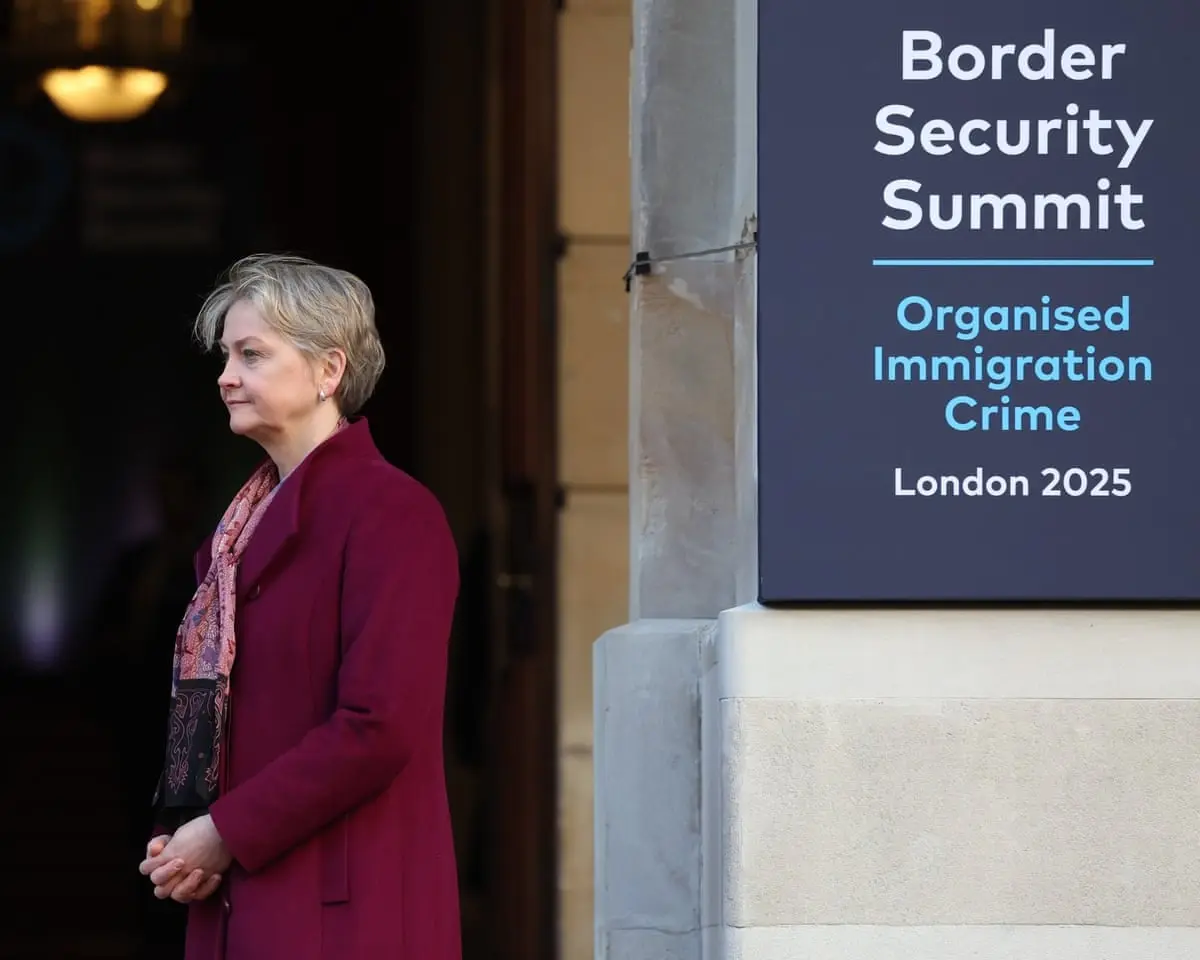
Image Source: The Guardian
So, what’s really behind this massive change to the uk immigration rules 2025? Well, in May 2025, the UK government dropped a pretty hefty White Paper called “Restoring Control over the Immigration System.” It sounds serious, right? And it is! This document lays out their plans for a complete overhaul, which Prime Minister Keir Starmer even described as a response to a “one-nation experiment in open borders” under the previous government.
The Numbers Game: Why Net Migration Became a Political Hot Potato
Let’s be honest, the numbers have been eye-watering. Net migration (that’s the number of people coming in minus those leaving) hit a record high of 906,000 in June 2023. To put that in perspective, it was “only” 224,000 back in June 2019 – that’s a fourfold increase! Even though it dipped a bit to 728,000 for the year ending June 2024, these figures are still way higher than the 200,000 to 300,000 a year we were seeing between 2010 and 2019.
This huge surge happened after some big policy shifts in 2020. Back then, the skills threshold for getting a visa was lowered from a degree-level (RQF 6) to an A-level equivalent (RQF 3), and a new basic salary threshold of £25,600 was set. What happened next? The number of skilled work visas for non-graduate jobs shot up from 10% in 2019 to a whopping 60% by 2024!
The Prime Minister also pointed out that some employers were even getting a 20% wage discount if they hired from abroad for jobs on the shortage list. The government’s take is that this discouraged companies from paying the going rate or training people here in the UK. It’s a tricky balance, isn’t it? Trying to fill job vacancies while also making sure the system works for everyone. It’s almost as complex as figuring out when do the clocks change? sometimes!
It seems some sectors became super reliant on overseas workers. For example, engineering visas went up from 3,427 in 2021 to 5,495 in 2024, but at the same time, new engineering apprenticeships in England actually dropped. The government felt these trends were undermining not just the immigration system but the whole economy. The social care sector, in particular, came under fire, with reports of exploitation leading to hundreds of care providers having their sponsorship licenses suspended and thousands of care workers left in difficult situations.
What’s the Grand Plan? Aims of the 2025 White Paper
So, what does this new White Paper actually want to achieve with the uk immigration rules 2025? It seems to boil down to five main goals:
- Slash Net Migration: Get those numbers down and ensure the system is properly managed and controlled.
- Boost Homegrown Skills: Link immigration more closely to what skills we need here, and encourage more training for UK residents to stop us relying so much on foreign workers.
- Fair and Effective System: Create clearer rules, especially around family life, that everyone can understand.
- Respect and Enforce the Rules: This includes cracking down on illegal migration.
- Better Integration: Help people settle into their communities, partly through new English language requirements.
The government reckons these changes could cut the number of visas given out by about 100,000 a year, though some officials think it could be even more if they bring in extra measures. The Office for Budget Responsibility is forecasting that annual net migration might drop to around 315,000 by the end of this Parliament.
But it’s not just about cutting numbers. The White Paper talks about a new “Earned Settlement” model. This means the government wants people to really earn their right to stay here permanently by showing they’ve contributed to the UK over time – economically, socially, and through getting involved in the community. The old idea of permanent residence being almost an automatic thing after a few years of temporary migration? That seems to be out the window.
There are also bigger economic thoughts at play. The Prime Minister questioned whether high immigration automatically means better economic growth, pointing out that while overall GDP might go up, GDP per person (which is a key thing the government wants to improve) actually fell in 2023 and was flat in 2024.
Ultimately, the government says this is all about creating a “properly managed and controlled, fair immigration system that benefits our country and has the confidence of communities.” It’s a massive ambition, and only time will tell how it all pans out!
Skilled Worker Visas: The Bar Just Got MUCH Higher!
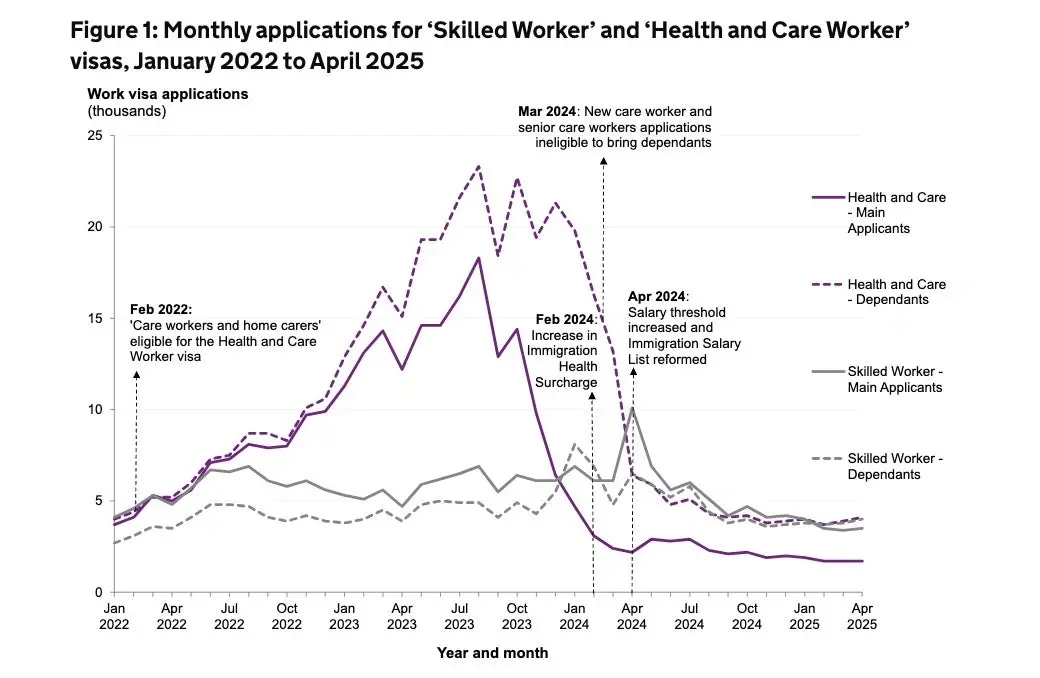
Image Source: The Independent
Right, if you’re a skilled worker dreaming of coming to the UK, or an employer looking to hire from overseas, you absolutely need to pay attention to this next bit. The uk immigration rules 2025 are bringing in some of the toughest reforms to the Skilled Worker visa system we’ve seen since 2020. The Home Office is really tightening the screws on who qualifies and what they need to earn. It’s a central part of the government’s big plan to be more selective and reduce overall net migration.
Skill Level Skyrockets: RQF Level 6 is the New Norm
Remember how the skill level for visas was lowered to RQF Level 3 (that’s A-level equivalent) back in 2020? Well, that’s all changing. The minimum skill threshold is jumping back up to Regulated Qualifications Framework (RQF) Level 6. What does that mean in plain English? You’ll generally need to have qualifications equivalent to a bachelor’s degree.
This is a massive shift from the post-Brexit system which was trying to make it easier to recruit after the pandemic. The government’s new thinking is that “skilled work for migration purposes must truly mean skilled work.” No more, no less.
What’s the impact? Well, this change alone is expected to knock out about 180 occupations from being eligible for sponsorship! We’re mainly talking about those middle-skilled jobs, perhaps in areas like construction or food preparation. The Home Office reckons this could mean about 17,000 fewer main applicants and 22,000 fewer dependants coming in each year – that’s around 39,000 people in total. It’s a big number, especially when you consider that these middle-skilled jobs currently make up about 1,000 visa grants every month, not even counting family members.
The government also wants employers to focus more on training people already in the UK. So, before looking overseas, businesses will increasingly need to show they’ve got plans to boost British skills and recruitment. It’s all part of that wider goal to reduce net migration by around 100,000 people a year.
Show Me the Money! Salary Threshold Jumps to £38,700
Alongside needing higher qualifications, the amount you need to earn has also shot up. The standard salary threshold for most Skilled Worker visa applicants is now a hefty £38,700 per year. That’s a huge leap from the previous £26,200 – nearly a 50% increase!
And it’s not just about hitting that baseline figure. You’ll need to earn either £38,700 OR the “going rate” for your specific job, whichever is higher. So, for some jobs, the actual salary needed could be even more.
Now, there are a few exceptions to this, thankfully:
- Health and Care Workers: These folks have a lower minimum threshold, currently set at £25,000.
- New Entrants: If you’re under 26, a recent graduate, or in professional training, you might get away with earning between 70% and 90% of the standard requirement, as long as it’s at least £30,960.
- PhD Holders (STEM): Got a PhD in a Science, Technology, Engineering, or Maths subject relevant to your job? You might qualify if you earn 80% of the standard rate, but still at least £30,960.
- PhD Holders (Other Subjects): If your PhD is in another subject, you’ll likely need to earn at least 90% of the standard rate, with a minimum of £34,830.
It’s not just tougher for applicants; employers are feeling the pinch too. The cost of a Certificate of Sponsorship (CoS) has jumped by a massive 120%, from £239 to £525. Ouch! Plus, the Immigration Skills Charge that employers pay is going up by 32% – the first increase since it was brought in back in 2017. This extra cash is apparently going towards upskilling UK workers.
What About Current Visa Holders & Employers? A Sigh of Relief (Mostly!)
If you’re an employer, these new UK immigration rules 2025 mean you’ve got to be super careful. All job offers must meet these new, higher standards, or you could face visa refusals or even problems with your sponsor license. Industries that relied on middle-skilled workers are already feeling this – visa grants in food preparation apparently dropped by 73% and in construction trades by 64% during 2024. Navigating these changes can feel as tricky as trying to find one of the best savings account UK options when banks keep their best deals hidden!
But here’s a crucial bit of good news for people already in the system! If you were already on a Skilled Worker visa before April 4, 2024, you generally won’t be subject to the new £38,700 salary rule when you change jobs, extend your visa, or apply for settlement. Phew! Instead, you’ll usually only need to meet a lower threshold of £29,000 and the “lower going rate” for your job. This “grandfathering” protection is set to last until April 4, 2030, giving a six-year window for current skilled migrants to adjust.
Meanwhile, the pressure is on for employers. If they want to hire from overseas, they’ll need to show they’re serious about developing their UK-based workforce, as the whole system is shifting to put British skills first. It’s all part of that grand plan for a “properly managed and controlled, fair immigration system.”
Social Care & Shortage Jobs: Big Changes on the Horizon!
It’s not just the main Skilled Worker visa route that’s getting a massive shake-up under the uk immigration rules 2025. Two other really key areas are seeing huge transformations: the social care sector and how the UK handles jobs where we’re short of workers. Let me break it down for you.
Social Care Visas: Overseas Recruitment Halted!

Image Source: DavidsonMorris
This is a big one. The government has announced that the Health and Care Worker visa route is effectively closing its doors to new overseas applicants wanting to work in social care. This route saw a massive jump in visas, from about 37,000 in 2022 to a staggering 108,000 in 2023!
So, why the sudden stop?
Well, the main reason seems to be serious concerns about exploitation within the sector. The Home Office apparently had to revoke over 470 sponsor licenses from care employers due to these worries. Shockingly, around 39,000 to 40,000 care workers who came here found themselves in really tough situations – some with jobs that didn’t even exist or weren’t up to standard. It’s awful to think about people being treated unfairly like that.
The government also argues that the social care sector has become too reliant on lower-paid overseas workers. By 2024, a massive 75% of all Health and Care visas were actually issued to dependants rather than the main applicants. The official line is that the shortages in adult social care aren’t really down to a lack of available workers, but more because of historically poor pay and working conditions. It’s a tough situation because, as we all know, good care workers are absolute heroes. This focus on improving conditions might even be as important as making sure our homes are healthy, perhaps by using one of the best dehumidifiers to tackle damp.
Is there a transition period?
Yes, thankfully! To stop the whole system grinding to a halt, there’s a transition period running until 2028. During this time:
- Care workers already here on this visa can still extend it.
- People already in the UK on other visas might be able to switch to a care worker visa (if they qualify).
- Employers are being encouraged to recruit from the pool of workers already in the UK whose previous sponsorships were cancelled.
This gradual approach is designed to give the sector time to adjust, but the message is clear: the UK wants to move away from depending on overseas workers to fill care needs.
What’s the long-term plan then? Fair Pay Agreements!
Instead of international recruitment, the government is pushing something called Adult Social Care Fair Pay Agreements. The idea is to get employers, workers, and the government around the table to negotiate better pay and conditions across the whole sector. They’ve even expanded something called the Care Workforce Pathway to try and make care work a more professional and attractive career for people in the UK. Research suggests that even a small 1% pay rise could boost the number of people working in care by 1.8%! With the sector needing an estimated 440,000 extra posts by 2035, something definitely needs to change.
Goodbye Shortage Occupation List, Hello Temporary Shortage List!
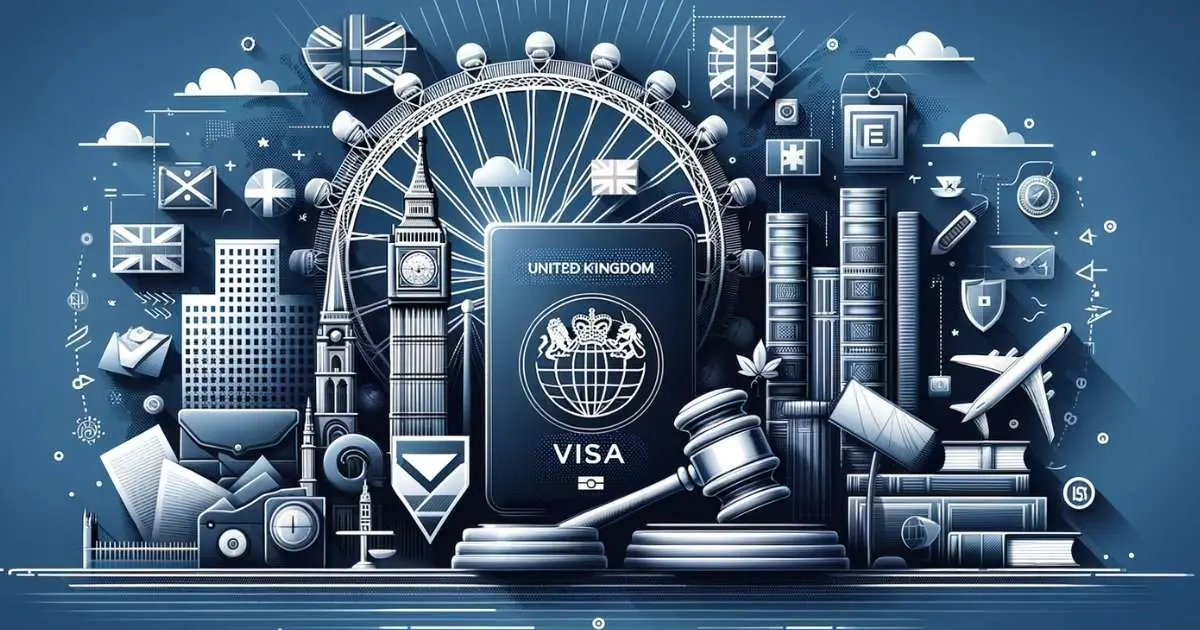
Image Source: Primus Solicitors
Another big shift in the uk immigration rules 2025 is how the government is dealing with jobs where there aren’t enough UK workers. You might remember the Shortage Occupation List (SOL)? It allowed employers to hire overseas workers for certain jobs at a slightly lower salary (80% of the going rate or a minimum of £20,960 instead of the old £26,200 threshold).
Well, the SOL was officially scrapped in April 2024 and replaced by something called the Immigration Salary List (ISL), which put more emphasis on salary rather than just the job title. But guess what? That’s changing again!
The government is now getting rid of the ISL and bringing in a new Temporary Shortage List (TSL). This sounds like a much stricter approach, especially for jobs that don’t necessarily need a degree (those RQF Level 3 to 5 roles, like skilled trades or technicians).
How will the Temporary Shortage List work?
Basically, if a job is below that RQF Level 6 (degree-level) threshold, it will only be eligible for sponsorship if it makes it onto this new Temporary Shortage List. And getting on this list won’t be easy or permanent. Sectors will have to prove:
- They have a proper, government-approved plan to recruit more UK workers in the long run.
- They’re actually investing in training and upskilling people here in the UK.
- They offer fair working conditions and are trying to prevent exploitation.
- They have a clear plan to reduce their reliance on overseas recruitment over time.
On top of all that, jobs will only even be considered for the TSL if they’re seen as key to the UK’s industrial strategy, and the Migration Advisory Committee (MAC) – they’re the independent body that advises the government on migration – agrees it’s justified. So, no more automatic inclusion for certain jobs! It’s a far cry from just checking a list; it’s a whole strategy. It sounds like a lot to manage, a bit like trying to keep on top of all your household tasks, even simple things like learning how to clean your washing machine properly!
What’s the MAC’s role in all this?
The Migration Advisory Committee is getting a much bigger job. They’ll be looking at these workforce strategies from different sectors and advising the Home Secretary on:
- Whether a job should even be on the TSL.
- How long it should stay on the list.
- If there should be any caps or quotas on visa numbers for these jobs.
- The specific terms and conditions for visas under the TSL.
This is a big change from just updating a list. The MAC will now be digging into whether industries are genuinely trying to hire and train locally. The whole idea is to make sure that bringing in workers from overseas is a temporary fix for real shortages, not a permanent solution that avoids investing in the UK workforce.
It’s clear these uk immigration rules 2025 are trying to make a fundamental shift. It’ll be really interesting to see how these changes play out for both employers and people wanting to work in the UK.
Settling Down & Family Life: Longer Waits and New Hurdles
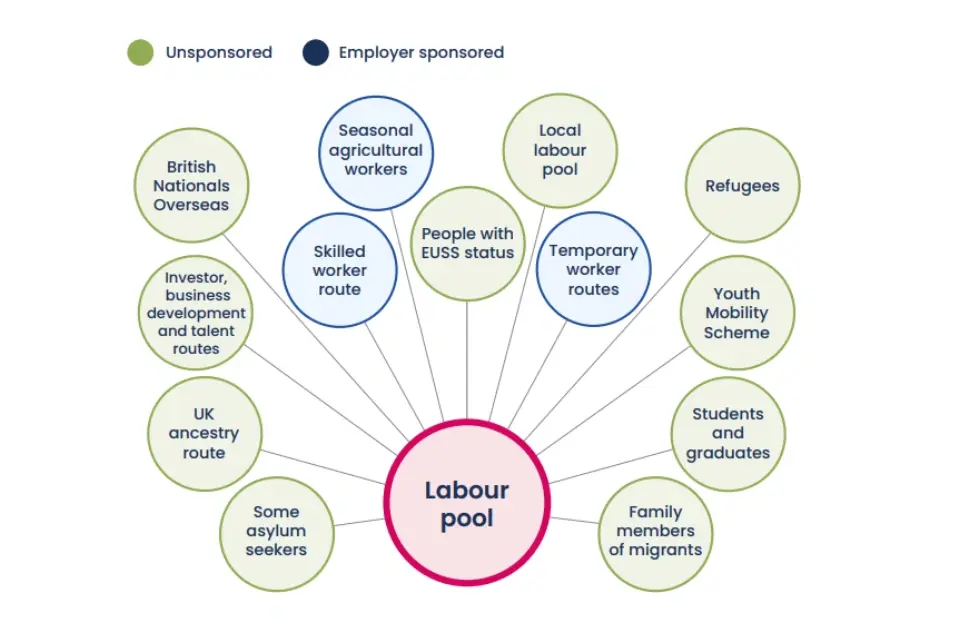
Image Source: GOV.UK
If you’re planning to make the UK your forever home, or hoping to bring your family over, the uk immigration rules 2025 are introducing some pretty fundamental shifts. The government is really changing its tune on how people get permanent settlement, moving towards a model where it feels like you really have to earn your stay.
The Long Haul: ILR Residency Stretched to 10 Years!
Okay, this is a biggie. For most people looking to get Indefinite Leave to Remain (ILR) – that’s the permission to live in the UK permanently – the standard waiting time is set to double. Yep, you read that right! It’s going from five years to a whopping ten years.
This is a major extension and affects most work-based visa routes. The government is calling this new approach an “Earned Settlement” model. The thinking behind it is that getting permanent residency shouldn’t just be something that happens automatically after a few years; it should be something you achieve by showing you’ve made a sustained and measurable contribution to the UK – whether that’s economically, socially, or by getting involved in the community.
For many skilled workers, this means staying on temporary visas for much longer, which could mean more visa renewals and, let’s be honest, more costs. Each renewal can bring fresh application fees, those hefty Immigration Health Surcharge payments (currently £1,035 per adult and £776 per child per year, paid upfront!), and potentially more legal costs. It’s definitely something to factor into your long-term planning. It makes sorting out your finances and perhaps looking into the best cash ISAs even more important to prepare for these longer-term expenses.
However, there are a few exceptions to this ten-year rule. The government has said they’ll still offer a shorter five-year path for non-UK dependants of British citizens. Plus, they’re keeping safeguards for vulnerable groups, like victims of domestic abuse. And, in a really thoughtful move, they’re creating a new “bereaved parent route,” which will allow immediate settlement for those who have tragically lost a British or settled child while in the UK on a parent route.
Earning Your Stay: Can You Speed Up Settlement with a Points System?
So, is there any way to shorten that ten-year wait? Well, possibly! Alongside stretching out the standard time, the new system is bringing in a points-based “earned settlement” idea. This means you might be able to get ILR a bit sooner – perhaps after five to seven years – if you can show you’ve made really significant contributions.
What kind of contributions are we talking about? It looks like points could be awarded for things like:
- Working in really important sectors, like healthcare or education.
- Earning a higher salary and paying more tax.
- Having professional qualifications.
- Doing community service or volunteering.
- Working in a job that’s officially recognised as being in shortage.
The exact details and how the points will be scored are still being worked out, with more information expected after a consultation later in 2025. But the main idea is to reward people who are demonstrably adding value to the UK.
Language Skills in the Spotlight: New English Tests for Dependants
Another really interesting part of the new uk immigration rules uk 2025 is a much bigger focus on English language skills, especially for adult dependants. For the first time, pretty much all adult dependants of workers and students will need to show they can speak English.
It’s going to be a kind of ladder system:
- Entry Level: You’ll need to show basic English skills (Level A1 on the framework) just to come into the country.
- Visa Extension: To extend your visa, you’ll need to have progressed to the next level (A2).
- Settlement (ILR): And to get that all-important settled status, you’ll need to reach a B2 level, which means you’re an “Independent User” of English.
Even main applicants for Skilled Worker visas might see the language requirement go up from a B1 to a B2 level. The government says this is all about helping people integrate better into their local communities, find jobs, and reduce the risk of exploitation. It makes sense, right? Being able to communicate is key to feeling at home.
Of course, if you’re a national from a country where English is the main language (like Australia, Canada, the USA, and most Caribbean nations), these rules usually don’t apply to you.
Family Visas & Article 8: Clarifying the Rules
The rules around family visas and the “right to family life” (that’s Article 8 of the European Convention on Human Rights) are also getting a look-in. The government feels the current system for family migration has become a bit too complicated, with too many decisions being based on court interpretations rather than clear rules set by Parliament.
So, they’re planning to bring in new legislation to make it clearer how Article 8 should apply in immigration cases. The aim seems to be to limit claims from people who might be trying to get around the rules – for example, by saying they’re just visiting but then trying to stay based on family ties, or by making lots of last-minute claims to delay being removed from the UK. The new framework will also try to define more precisely when “exceptional circumstances” can actually apply.
For family visa sponsorship, those income thresholds have already seen big jumps. In April 2024, the minimum income needed went up from £18,600 to £29,000. The original plan was to push this even higher, up to £38,700 by early 2026, to match the Skilled Worker visa levels. However, the current Labour government has put a temporary pause on any more increases until the Migration Advisory Committee has had a chance to review the financial rules for family visas. So, for now, it’s £29,000, but watch this space! If you’re extending a visa that was granted before April 2024, you can thankfully still qualify under the old £18,600 threshold.
It’s all about trying to balance respecting family life with making sure people can support themselves financially in the UK. These are definitely some of the most impactful uk immigration rules 2025 for individuals and families.
Student & Graduate Visas: Tighter Rules for Studying and Staying On
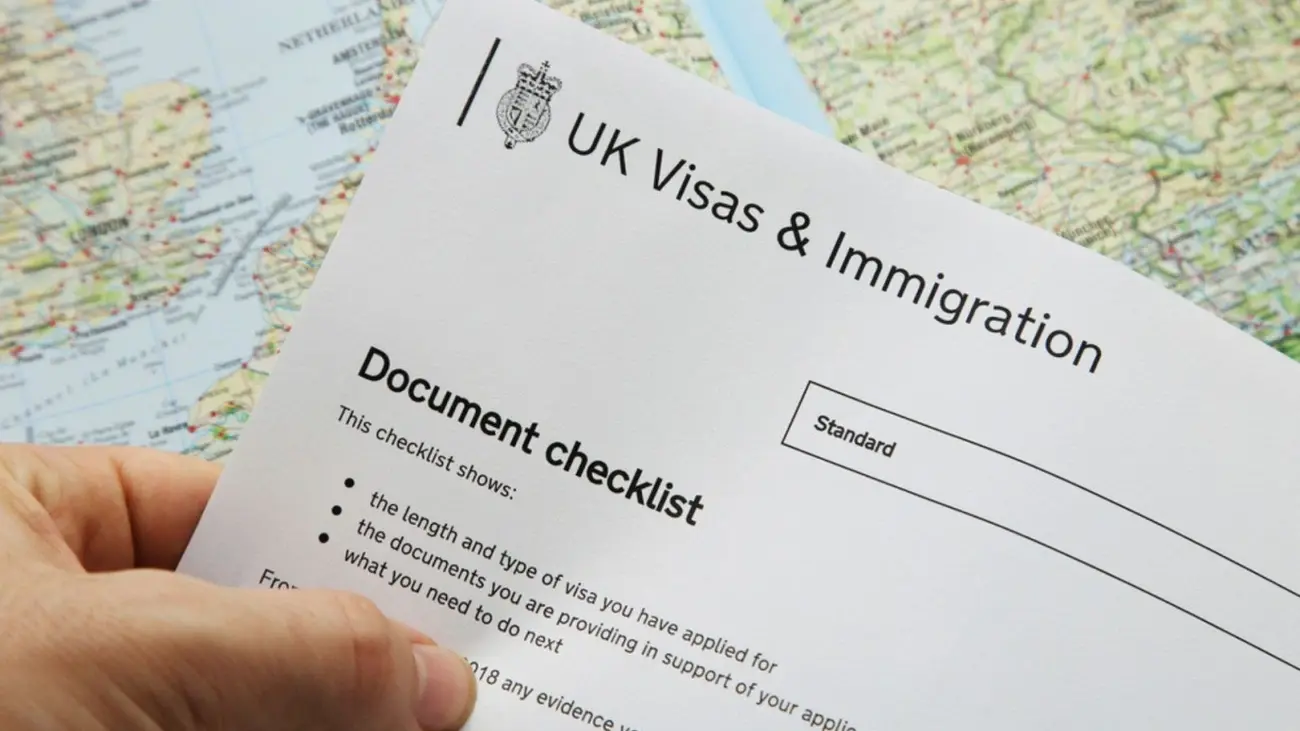
Image Source: Travel and Leisure Asia
If you’re an international student, or hoping to become one, the uk immigration rules 2025 are bringing in some pretty hefty changes that you’ll definitely want to know about. It’s not just about getting your study visa; the rules around bringing family and what happens after you graduate are also being tightened up. The government seems to be aiming for a more selective approach when it comes to international education and the pathways to stay in the UK afterwards. It’s a bit like trying to get into one of the best universities in London – the standards are getting higher!
Dependants Alert! PhD-Level Study Now Key for Bringing Family
This is a really big one. Since January 2024, the rules around bringing dependants (like your partner or children) while you study have changed dramatically. Now, only international students on research postgraduate courses – that basically means PhD-level programmes – or those who are receiving government funding for their studies, can bring their family members with them.
This is a huge shift from before when students on taught Master’s courses could also bring dependants. This change alone is thought to have affected around 30,000 dependants who might have come in 2023. And the impact is already being seen – early signs suggest a massive 63% drop in deposits paid by international postgraduate students for the September 2024 intake compared to the year before. Wow!
The Graduate Route: Shorter Stays and Closer Scrutiny
What about after you’ve finished your studies? The Graduate Route, which allows international students to stay and work in the UK for a bit, is also facing some major tweaks under the uk immigration rules 2025.
The biggest change? The time you can stay is being cut. For most students finishing undergraduate or Master’s degrees, the Graduate Route will be shortened from 24 months (two years) down to just 18 months. This is happening because the number of people using this route has rocketed, from under 100,000 in 2022 to nearly 250,000 in 2024.
The government has also said it’s “setting out reforms that strengthen requirements to work and contribute for graduates who stay after course completion.” They seem to feel that too many graduates on this route weren’t moving into the kind-of graduate-level jobs it was designed for. For employers, especially smaller ones who don’t have a sponsor license, this shorter timeframe means less opportunity to assess a graduate before having to commit to full sponsorship.
Interestingly, despite some talk that the route might be restricted to only professional roles, that hasn’t happened – at least not yet.
Universities Under the Microscope: Stricter Compliance Rules
It’s not just students feeling the squeeze; the universities and institutions that sponsor international students are also facing tougher oversight. The Basic Compliance Assessment (BCA) standards are being ramped up.
Currently, universities need to hit these targets:
- A visa refusal rate of less than 10%.
- A course enrolment rate of at least 90%.
- A course completion rate of at least 85%.
Under the new uk immigration rules 2025, these thresholds are each set to rise by five percentage points. So, for example, the visa refusal rate will need to be less than 5%, and course completion will need to be at least 90%!
There’s also a new “Red-Amber-Green” banding system coming in, which will rate universities based on how well they’re complying. If an institution is close to failing these new tougher metrics, they could face special interventions, like having to follow a specific action plan to improve, or even limits on how many new international students they can recruit.
And one more thing – any university using recruitment agents to find overseas students will have to sign up to something called the Agent Quality Framework. This is all about making sure agents are managed properly and that institutions can’t just pass the buck on ensuring that the students they sponsor are genuinely coming to the UK to study. It sounds like a lot for universities to manage, maybe almost as much effort as trying to find the best mattress UK for a good night’s sleep after a long day of compliance checks!
These changes to the student and graduate visa routes under the uk immigration rules 2025 really show the government is serious about controlling numbers and ensuring the system is seen as high quality.
So, What’s the Big Picture? My Final Thoughts on the UK Immigration Rules 2025
Wow, we’ve really dived deep into the uk immigration rules 2025, haven’t we? It’s a lot to take in! What’s crystal clear is that the UK’s immigration landscape is going through its most significant transformation since way back in 2020. The government’s White Paper, “Restoring Control Over the Immigration System,” isn’t just tinkering around the edges; it’s fundamentally trying to change who comes to the UK and how they can stay.
The main thread I’ve picked up on is this big push away from relying on overseas recruitment and a much stronger focus on developing skills here at home. We’ve seen this with the massive hike in the Skilled Worker visa salary to £38,700 and the jump to degree-level qualification requirements. That’s going to make a huge difference.
Then there’s the social care sector – closing that visa route to new overseas applicants is a massive step, and the plan is to force improvements in pay and conditions to attract UK workers instead. It’s a bold move, and it’ll be really interesting to see how it plays out, especially with that three-year transition period.
And the path to settling here permanently? Doubling the Indefinite Leave to Remain period from five to ten years for many is a game-changer. It really hammers home that new “earned settlement” idea – staying in the UK long-term is becoming much more of a privilege you have to work towards, rather than an almost automatic step. Making such big life decisions under changing rules can be stressful, a bit like trying to find the best places to live in London when you’re also juggling a new job!
Even the student visa routes are getting a once-over, with tighter rules for dependants and a shorter Graduate Route. Plus, those new English language requirements for dependants across the board really show the government is serious about integration.
The government believes all these changes will cut visa numbers by around 100,000 a year, with net migration hopefully dropping to about 315,000 by the end of this Parliament. But, and this is a big but, those “grandfathering” provisions for people already in the system are super important. They mean the full impact of these uk immigration rules 2025 will probably be felt gradually, giving everyone – immigrants, employers, and institutions – a bit of time to adapt to this new reality.
Honestly, it’s a period of massive change. For employers, it means really thinking about investing in their UK workforce and getting ready for higher costs if they do need to sponsor someone. For anyone looking to move to the UK, it means planning very carefully and having realistic expectations. The straightforward paths to settlement that some might have known are definitely becoming a thing of the past.
But, even with all these new hurdles, opportunities will still be there for people who meet these higher standards and can really show they’re contributing to the UK. It’s just going to be a different landscape, and understanding these uk immigration rules 2025 is the first step to navigating it.
Your UK Immigration Rules 2025 Questions Answered (FAQs)
Got a few more questions buzzing around about these new uk immigration rules 2025? No worries, I’ve put together some quick answers to the most common ones I’ve been seeing!
Q1. How will the 2025 UK immigration changes affect people who already have visas?
Good news if you’re already on a UK visa! The government generally includes transitional provisions, meaning those already in the system aren’t usually hit with the harshest new rules immediately.
Specifically for those on a Skilled Worker visa granted before the significant salary threshold changes of April 4, 2024, protections were put in place. These typically mean you wouldn’t be subject to the brand new £38,700 salary requirement when changing jobs, extending your visa, or applying for settlement. Instead, the understanding based on those earlier changes is that you’d usually need to meet a lower threshold of around £29,000 and the ‘lower going rate’ for your job. This specific protection was planned to extend for a number of years, reportedly until early 2030.
While this May 2025 White Paper focuses on the new rules going forward (like raising the skill level for new applicants to RQF 6), it does confirm that existing Skilled Worker visa holders, for example, will continue to be able to renew their visas or change employment under different terms than brand new applicants (as per paragraph 71 of the White Paper regarding skill levels). For the most precise details on how your exact existing visa is affected by previous transitional rules, it’s always best to check the specific guidance that was current when those earlier changes were made or consult the official GOV.UK website.
Q2. What are the biggest changes to the Skilled Worker visa in 2025?
The two main ones are the skill level jumping from RQF Level 3 (A-level equivalent) up to RQF Level 6 (degree-level), and the general salary threshold rocketing from £26,200 to £38,700 a year. The government is saying that “skilled work for migration purposes must truly mean skilled work.” So, the bar is definitely higher!
This is a huge shift. The Health and Care Worker visa route is closing for new overseas applicants wanting to work in social care roles. There’s a three-year transition period (until 2028) where existing care workers can extend their visas or switch in-country. The long-term plan is to improve pay and conditions through Fair Pay Agreements to encourage more UK residents into these vital roles.
Q4. Are the rules for getting Indefinite Leave to Remain (ILR) changing?
Yes, big time! The standard time you need to live in the UK before you can apply for ILR (settlement) is doubling for most people, from five years to ten years. They’re also bringing in a new points-based “earned settlement” idea, where you might be able to get ILR a bit sooner if you can show you’ve made significant contributions to the UK’s economy and society.
Q5. How are student visas and the Graduate Route affected by the new immigration rules?
For students, the main change is that only those on PhD-level courses (or with government funding) can now bring dependants. For those who have finished their studies, the Graduate Route visa (which lets you work for a bit) is being shortened from 24 months (two years) down to 18 months for most undergraduate and Master’s graduates. Plus, universities sponsoring international students will be facing stricter compliance rules. It’s all about a more selective approach.



